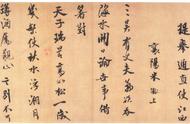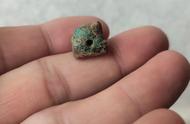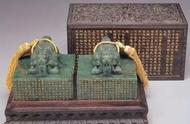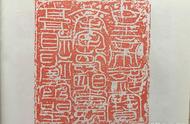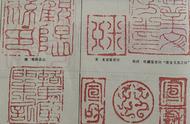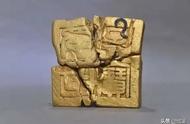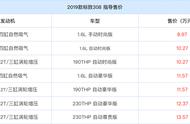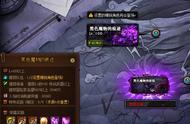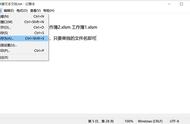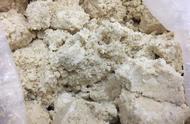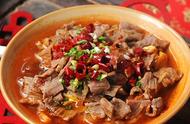田黄石(Field-yellow stone),简称“田黄”,产于福州市寿山乡寿山溪两旁之水稻田底下,呈黄色而得名。是寿山石品种中的珍品。广义的田黄石指“田坑石”,狭义的田黄石指田坑石中发黄色者。物理性质、工艺美术特征方面,田黄石与寿山石相近,已成为独立的印章石品种。
田黄石是寿山石系中的瑰宝,素有“万石中之王”尊号。其色泽温润可爱,肌理细密,自明清以来就被印人视为“印石之王”。数百年来田黄石极受藏家至爱,正如俗语所说:“黄金易得,田黄难求”。
早在一千多年前,我国已有人开始采集,到了明清两代田黄石更是盛名于世。许多达官显贵,文人雅士竞相刻意收集田黄石。相传清初时期皇帝祭天,神案上都少不了一方上品田黄石。因此,田黄石一直盛名不衰,身价倍增,曾有古话“一两田黄一两金”。
藏品介绍
中文名称:狮钮田黄印章
英文名称:Lion niutian yellow seal
类别:杂项
规格:一件
品相:美品

上图可见清晰的萝卜纹,红筋,表现十分自然,这也正是由于田黄冻的半透明感,给人直观的体现了萝卜纹,红筋的美感,由此特征为开门田黄冻石。
萝卜纹是田黄石的沁色通道,众所周知,原本是山中矿石的田黄石胚,经过溪水长期的冲刷滚动,磨圆了棱角,淘净了杂质,形成了卵形的田黄石胚胎,然后又被地表的虚土掩埋在溪谷沙石泥土的底层,在周围含铁土壤、水分及温度的浸渍与影响下,对田黄石起了沁色(自然加色)作用。这种漫长而十分特殊的沁色过程,使田黄石的色泽自然瑰丽,而肌理隐现的萝卜纹便是田黄石沁色的通道。或者说没有田黄石的萝卜纹,就不会有田黄石桔皮黄、金黄、桂花黄、熟栗黄,枇杷黄,奶黄等颜色形成的必要条件。

九叠篆,是一种非常特别的篆书,原本是一种流行于宋代的“国朝官印”字体,主要用于印章镌刻,其笔画折叠堆曲,均匀对称。每一个字的折叠多少,则视笔画的繁简确定,有五叠、六叠、七叠、八叠、九叠、十叠之分。之所以称为“九叠”,则是因“九是数之终,言其多也”。可见此田黄印章九叠篆之精美,不仅材质珍贵,工艺超绝,同时也具有极高的书法价值。

可见基座上几条红筋,其中一条红筋十分明显,再看此狮钮印章,狮子偏头回望,而古代取其谐音,寓意为:好(狮)事在后头,故而此印章寓意十分吉祥,为市场讨喜之珍品。

身为“印石三宝”之一的田黄石,呈现黄、白、红、黑等色,其中以黄色为最常见。具有珍珠光泽、玻璃光泽、油脂光泽,微透明至半透明,少数透明。硬度2.5,密度2.65-2.90克/厘米3。质地致密、细腻、温润、光洁。尤为引人注目的是其肌里隐约可见萝卜纹状细纹,颜色外浓而向内逐渐变淡,表面时而裹有黄色或灰黑色石皮,间有红色格纹。为田黄石所独有的外观特征,素有“无纹不成田”、“无皮不成田”、“无格不成田”之称。诚然,从其石质来说,仍以纯净为贵。

这件田黄颜色纯正,整体呈现冻状,有如果冻一般,润感十足,字体篆刻精美,工整,章面干净整洁,且有老朱砂红泥附着,可见此印章带着年代沧桑感,细看品相完美,十分耐赏!目前田黄价格以克计算,加上这工艺年代,其收藏价值不可估量,为市场追逐之稀有宝藏,可谓是千金易得,一宝难求。
英文翻译:Field-yellow stone, referred to as "Tian Huang", is produced under the paddy fields on both sides of Shoushan Creek in Shoushan Township, Fuzhou, and is named for its yellow color. It is the treasure in the variety of Shoushan stone. In the broad sense, Tian Huangshi refers to "Tian Keng stone", and in the narrow sense, Tian Huangshi refers to the yellow hair in Tian Keng stone. In terms of physical properties and arts and crafts characteristics, Tian Huangshi is similar to Shoushan stone and has become an independent variety of seal stone.
Tian Huangshi is the treasure of Shoushan stone system, known as "the king of stone" Zunhao. Its color is warm and lovely, and its texture is fine. Since the Ming and Qing Dynasties, it has been regarded as the "king of stone printing" by the Indian people. For hundreds of years Tian Huangshi has been very loved by collectors, as the saying goes: "gold is easy to get, Tian Huang is hard to find."
As early as more than one thousand years ago, China has begun to collect, to the Ming and Qing dynasties Tian Huangshi is more famous in the world. Many dignitaries, literati deliberately collect Tian Huangshi competition. Legend has it that in the early Qing Dynasty, the emperor offered sacrifices to heaven, and the case of God is not a party of Shangpida Huangshi. Therefore, Tian Huangshi has been famous, doubled, there was an old saying "one or two Tian Huang one or two gold".
The collection is introduced
Chinese name: lion niutian yellow seal
English name: Lion Niutian Yellow Seal
Category: Miscellaneous
Specification: One piece
Appearance: Beautiful
The above diagram shows clear radish lines and red tendons, which are very natural. This is precisely because of the translucent feeling of Tian Huang Jang, which intuitively reflects the beauty of the radish lines and red tendons. This is characterized by the stone of Tian Huang Jang.
Radish grain is field-yellow stone seeps the color channel, it is known to all that was in the mineral mountain field-yellow stone embryo, scouring by streams of water have long scroll, rounded edges and corners, clean out the impurity, net formed the oval field-yellow stone embryo, and then be XuTu buried at the bottom of valley sand soil on the surface of the earth, in the surrounding soil, moisture and temperature of the iron impregnated with influence, Tian Huangshi has played a role in color (natural color). This long and very special coloring process makes the color of Tian Huangshi beautiful, and the hidden radish lines are the channel of Tian Huangshi's coloring. In other words, without the radish pattern of Tian Huangshi, there would be no necessary conditions for the formation of orange skin yellow, yellow, osmanthus yellow, cooked chestnut yellow, loquat yellow, milk yellow and other colors of Tian Huangshi.
Jiudiazhuan, a special seal character, was originally a popular font in the Song Dynasty called "official seal". It was mainly used to engrave seals. Its strokes were folded and stacked with curves, which were uniform and symmetrical. The number of folds of each word depends on the simplicity of the strokes. There are five folds, six folds, seven folds, eight folds, nine folds and ten folds. The reason why it is called "nine stack" is because "nine is the end of the number, the words are many." It can be seen that this Tianhuang seal Jiuzhuan exquisite, not only precious material, excellent technology, but also has a high value of calligraphy.
Visible on the base of several red tendons, one of the red tendons is very obvious, and then look at the lion button seal, the lion head back, and ancient take its homonym, meaning: good (lion) things in the back, so this seal meaning is very auspicious, for the market for the treasures.
As one of the "Three Treasures of the Seal Stone", Tian Huangshi presents yellow, white, red and black colors, among which yellow is the most common. With pearl luster, glass luster, grease luster, micro transparent to translucent, a few transparent. Hardness 2.5, density 2.65-2.90 g/cm 3. The texture is dense, delicate, warm and smooth. Particularly eye-catching is the faintly visible radish grain fine lines in its muscle, color outside thick and gradually become pale to the inside, the surface is sometimes wrapped in yellow or gray black stone skin, there is red pattern between. For the unique appearance characteristics of Tian Huangshi, known as "no grain no Narita", "no skin no Narita", "no grid no Narita" said. Indeed, from its stone, purity is still valued.
This Tianhuang is pure in color, with a frozen appearance like jelly on the whole, full of moist feeling. The font and seal cutting are exquisite, neat, the seal face is clean and tidy, and there is old cinnabar red mud attached to it. It can be seen that this seal has a sense of the vicissitudes of time, and the appearance is perfect upon close inspection, which is very pleasant to appreciate! At present, the price of Tian Huang is calculated in grams. Combined with this craft age, its collection value is immeasurable. As a rare treasure chased by the market, it can be said that a thousand gold is easy to get, but a treasure is hard to find.

